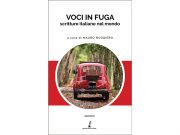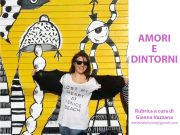
ANTENA LIVE – THE FILM”, a feature- length film shot during the lockdown, in full compliance with Italian government regulations of 8 March 2020.
The concept of “Quarantena Live” was devised by the Italian film director Giuseppe Aquino, author and director of “L’Altra Infanzia” (Cannes 2018), a film that inspired the “milk bonus” law of 400 euros in December 2019 for mothers in poverty.
QUARANTENA LIVE – THE FILM, currently in selection at the 77th Venice International Film Festival, is not only the world’s first real-life film about the pandemic (the plot is a mix of fiction and true stories), but also one which establishes completely unique and innovative method of filmmaking because it has been entirely shot during the lockdown caused by the pandemic.
For the first time in the history of cinema, all the scenes are managed and directed through videoconferencing facilities, phone calls, wifi systems and a series of innovative production and post-production techniques. This method was devised and tested by the director during the previous three years as a result of work on a film about missionary saint Peter Chanel, for which a number of scenes set in remote islands of the Pacific would have been difficult for the film crew to manage on-site.
The methodology was put into practice for QUARANTENA LIVE – THE FILM. Each location was transformed into a film set which was supervised and managed remotely by the director, set designer, costume designer, screen- writer, scriptwriter, director of photography, make-up artist, hairdresser and stage photographer. Everything was organised in coordination with the executive producers and admin team.
Thanks to this film, more than a hundred people were able to work during the lockdown period from March and May 2020 a time when only companies offering “essential services” were able to operate on site in Italy, and thousands of professionals in the creative industries were without work.
Giuseppe Aquino stated that one of the key purposes of the film which has all the characteristics of independent d’auteur cinema was to “leave a real, historical document from which we can draw to understand life during the pandemic, and also on a socio- anthropological level the drama of human experience during this epic time.”
It’s the Spring of 2020. The world this is the plot of the movie is in the grip of the Coronavirus pandemic Italy is badly hit and enters following the 8 March government decree in lockdown. People can leave the house only if strictly necessity and with self- certification. Travelling between re- gions is a criminal offence.
This choral film is a collection of stories set between March and May, brought together by a central storyline: a newly wedded couple forced to cut short their honeymoon because of the quarantine. The story attracts the attention of the media and a journalist reports the story under the heading of “Love in the Time of the Pandemic”. The people and families in the film are mainly friends and relatives of the couple, who each act out their personal stories. This takes place in Italy and around the world. Inevitably, the quarantine and Covid become the protagonists and co-protagonists of the film.
During the film, it emerges that there are no social differences in terms of poverty or wealth. Everyone is affected and no one left unscathed. The immediate feeling is one of fear and isolation; even a simple shopping trip can be an act of heroism. The media spreads news that is more and more tragic by the day. From the lawyer to the doctor, the married couple to the nurse, the student to the worker, everyone faces a time of great uncertainty. But amongst the challenges of social distancing and hours spent on the phone, in hospital, at home, in isolation, there transpires a desire to keep hope, faith and love firm. It is a story that begins with joy and ends in hope.






















